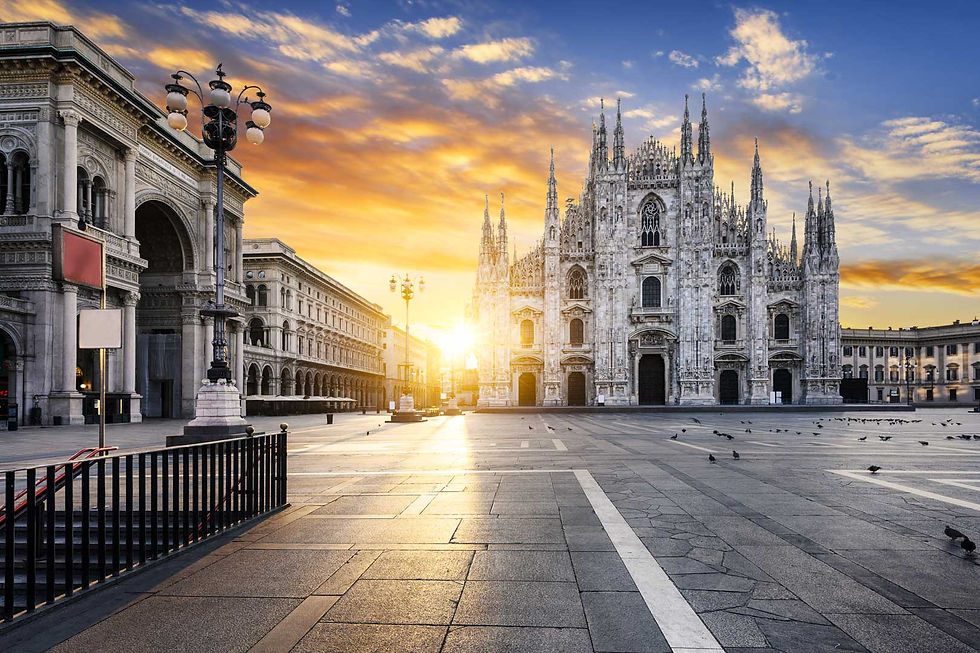Striding through Time: The Milan Duomo
- unescoflorence
- Jun 11, 2019
- 3 min read

What comes to mind when you hear the name Milan? The city is known for many things. It is a center of high fashion, renowned for its luxury brands and runways. It, along with much of northern Italy, are the industrial and economic heartbeat of one of the world’s largest economies. Yet, when you are there, do not forget its history, and no single building better encapsulates the city’s journey through the ages that its Duomo, the fifth largest Christian church in the world.
While the structure that stand before us now began its story in 1386, the site of the church is far older. According to what records we possess, the site of the Duomo sits directly on top of two previous buildings. The oldest records show that the site was home to the city’s public Roman basilica until 355 A.D, when a new church called St. Thecla was begun. Notably, this building endured until the late 1000’s when it was severely damaged by fire. The ravages of time and fire finally prompted the creation of the current building in the latter half of the 1300's.
Now, by way of inference, we can tell some interesting things about the site’s history, but the specifics are likely lost in time. First, we know that the city of Milan, especially the city center where the Duomo resides, dates all the way back to 400 B.C. Second, we know that the city center was originally inhabited by Gallic (‘Celtic’) peoples. We can infer from this that the site of the Duomo itself likely dates at least back as far and may have even been consecrated to Celtic gods. Once conquered by the Romans in 222 B.C, the city of Mediolanum, now called Milan, became a bastion of Roman order against the Gallic invaders to the north and a public basilica of suitable grandeur was built in the city center facing the city's forum. The city even became the seat of the Western Roman Empire for a time during the reign of Diocletian in 284 A.D. I mention all of this to drive home the sheer antiquity of the site, which predates even Venice and Florence as urban centers. When you cross the plaza in front of the Duomo, you are walking through time as well, treading the same exact steps of people 2400 years ago.
In his work ‘Innocents Abroad,’ Mark Twain describes his reaction to seeing this piece for the first time: ‘A delusion of frostwork that might vanish with a breath!’ I can think of no better description in all the world. Such language is not truly hyperbole when used to describe the Milan Duomo, though I am fond of such overwrought notions. Begun in 1387, the construction of this edifice was fraught with stories and styles and still is not yet completed, despite Napoleon forcing the completion of its world-famous facade in 1805. Yes, Napoleon was crowned King Italy inside this building, and there is even a statue there commemorating him. As one can imagine, when construction spans over seven centuries, architectural trends shift and art rewrites itself in new forms. As such, the styles one finds in the Duomo are myriad, to the point that even Oscar Wilde and John Ruskin famously criticized it. Generally speaking, the building is an example of Gothic architecture, much in the same vein as the French cathedrals, but even then it is a rather unique specimen that borrows from so many styles that it is hard to group it firmly with any other work of architecture. The cathedral is frosted with more statues than any other in the world, topping out at 3,400 along with over 700 gargoyles. It is like nothing else in the world, just like the city surrounding it.




Comments